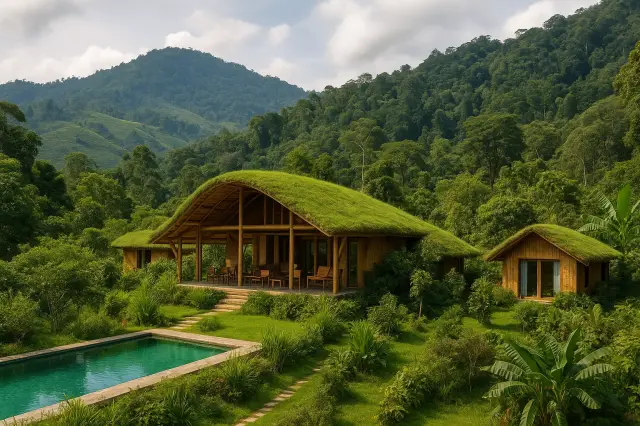Sustainable tourism in Colombia 2026 is emerging as one of the country's key initiatives to balance economic development with environmental and cultural conservation. More and more travelers are seeking authentic, responsible, and nature-connected experiences, which has driven the creation of new ecological routes, host communities, and tourism practices that protect biodiversity and strengthen local economies.
Why is sustainable tourism key for Colombia in 2026?
Colombia is one of the most biodiverse countries on the planet, with six natural regions, enormous cultural wealth, and immense potential for ecotourism. By 2026, sustainability will not just be a trend, but a fundamental requirement for attracting conscious visitors and ensuring that destinations maintain their environmental balance.
The National Government, together with the private sector and local communities, is promoting policies that encourage the certification of sustainable destinations, the use of clean energy, and the responsible management of natural resources.
Main trends in sustainable tourism in Colombia 2026
Below, we explore the trends that will shape the direction of responsible tourism in Colombia in 2026:
1. Community ecotourism routes
More and more rural municipalities are creating community-managed tourist routes. These experiences offer interpretive hikes, accommodations in ecovillages, local cuisine, and cultural workshops.
Notable examples:
El Cocuy National Natural Park , with local guides who promote responsible high mountain tourism.
The Guatavita and Tenza routes, where travelers can participate in sustainable agricultural activities.
These experiences strengthen the social fabric and reduce pressure on the most fragile ecosystems.
2. Eco-friendly accommodation and green-certified hotels
Sustainable eco-hotels and glamping sites are becoming a favorite option for travelers. These spaces utilize solar energy, wastewater treatment, and biodegradable materials.
Some pioneering destinations:
Coffee Region: Eco-tourism farms certified by the Rainforest Alliance seal.
Amazonas and Guainía: sustainable lodges managed by indigenous communities.
This trend contributes to a more conscious and nature-friendly tourism.
3. Regenerative tourism
Beyond causing no harm, regenerative tourism seeks to leave a positive impact on the environment. In Colombia, this includes reforestation programs, beach cleanups, and the rescue of native species.
Local organizations are offering experiences where visitors can actively participate in environmental actions, especially in areas such as Sierra Nevada de Santa Marta or La Macarena .
4. Sustainable mobility and zero carbon
The use of electric transportation on tourist routes will be one of the most visible developments in sustainable tourism in 2026. Cities like Medellín and Bogotá are leading the way with electric buses and eco-friendly bike paths.
In addition, many agencies are incorporating carbon offset programs, supporting forestry projects in regions such as Chocó and Caquetá.
5. Cultural tourism with a responsible approach
Reviving ancestral traditions and promoting Indigenous and Afro-Colombian peoples are pillars of sustainable tourism. In 2026, a boom in authentic cultural experiences is expected, where visitors can experience rituals, crafts, and cuisine without disrupting local customs.
Featured destinations:
San Basilio de Palenque , the first free town in America.
La Guajira , where the Wayuu communities offer experiences in their ranches.
6. Certifications and conscious tourism
Certified sustainable tourism will be a priority for agencies in 2026. Seals such as TourCert , Biosphere , and Rainforest Alliance are consolidated as guarantees of good environmental and social practices.
Booking platforms are also incorporating eco-friendly filters so users can choose destinations and accommodations committed to sustainability.
Benefits of sustainable tourism for Colombia
The growth of this model brings concrete benefits to the country:
It creates jobs in rural areas and vulnerable communities.
Promotes the conservation of ecosystems and endangered species.
Promotes cultural identity and regional pride.
Attracts high-value international tourists seeking purposeful experiences.
Sustainable tourism in Colombia 2026 represents not only a trend, but a transformation toward a travel model that protects the country's natural resources and promotes collective well-being.
Recommendations for sustainable travel in Colombia
If you plan to travel around the country in 2026, keep these recommendations in mind:
Bring your own containers and avoid single-use plastic.
Prefer accommodations with environmental certification.
Consume local products and support community businesses.
Respect the fauna, flora and traditions of the places you visit.
Calculate and offset your carbon footprint.
Projection of sustainable tourism towards 2030
According to the 2026–2030 Tourism Sector Plan , Colombia seeks to position itself as a leader in sustainable tourism in Latin America. This includes the development of green corridors , partnerships with international organizations, and the integration of technology to monitor the sector's environmental impact.
